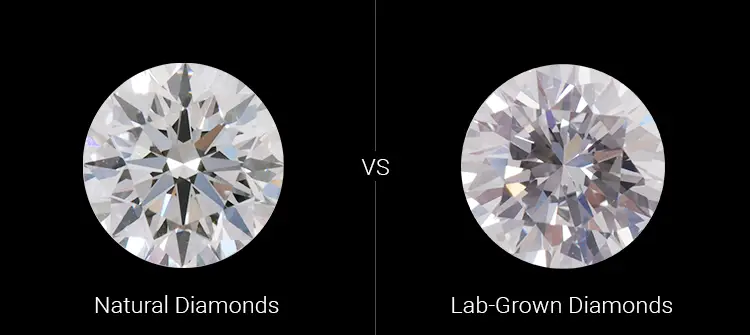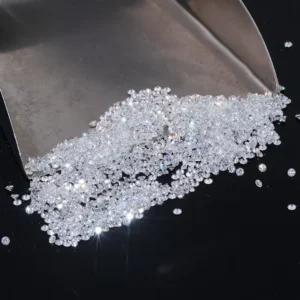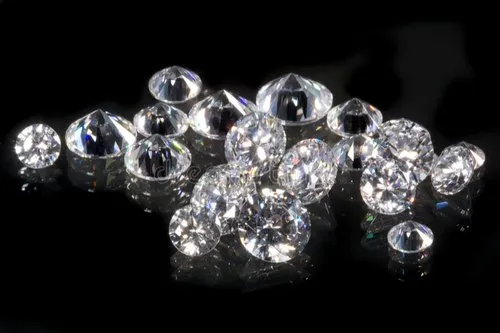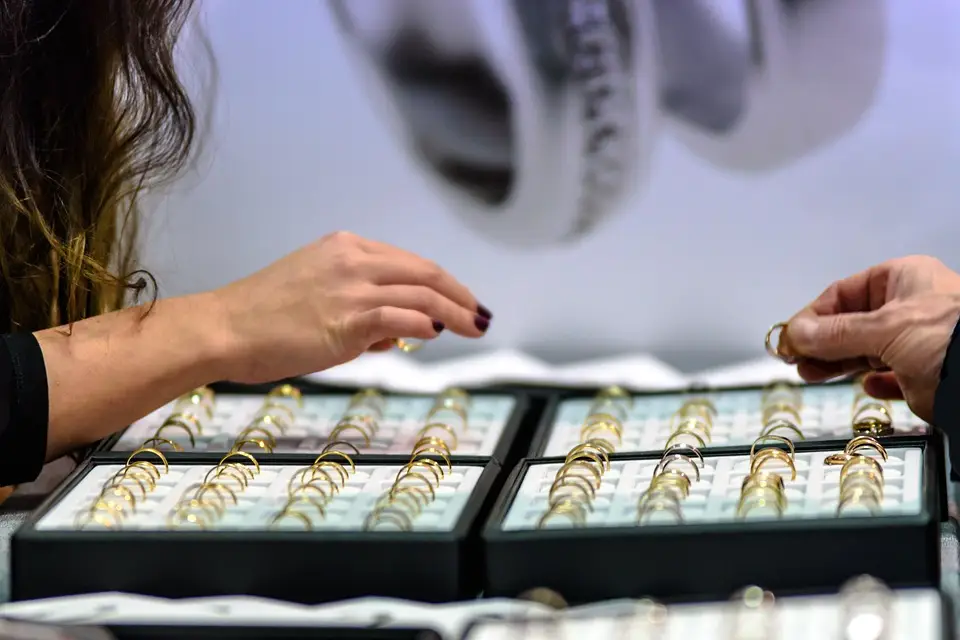When you are shopping for diamonds that are not earth mined, you will likely come across two different types: HPHT and CVD. But what are the similarities and contrasts between these two types of diamonds? And which diamond is right for you?
In this blog post, we will discuss how HPHT and CVD diamonds are alike and dissimilar, as well as provide you with some tips on how to choose the right diamond for your needs.
A lab-grown or man-made diamond is created using two different methods, High Pressure High Temperature (HPHT) or Chemical Vapor Deposition (CVD).
HPHT diamonds arise from a process similar to how a natural diamond is created. Meanwhile, CVD diamonds are created through the interaction of chemical components.
Compared to naturally occurring or mined diamonds, lab-grown diamonds have a variety of benefits.
Lab-grown diamonds are environmentally friendly because they do not require mining. Over the last several years, consumers have become more aware of issues surrounding natural diamond mining
If you are concerned about your diamond’s origins, lab-grown diamonds may be a good choice for you.
They also tend to be less expensive than natural diamonds. The technology for growing them is also constantly improving. This means their color and clarity have the ability to match that of natural diamonds.

Both HPHT and CVD lab grown diamonds are physically, chemically, and optically identical to natural diamonds. High quality lab grown diamonds can be so similar in appearance to mined diamonds that even experts need to look at them under a loupe to tell the difference.
This is why it may not be strictly accurate to refer to lab grown diamonds as fake or synthetic. They just weren’t taken out of the ground.
This means they are not like cubic zirconia or moissanite, which have different chemical structures to mined diamonds.
They also use the same 4C categorization system of mined diamonds: Color, Cut, Clarity and Carat.
Perhaps the most significant advantage they have over the natural diamond is that they take weeks to a few months to make instead of millions of years to form.
This signifies two things. The first is that a lab created diamond will be cheaper than a natural diamond. That’s because they can be produced much faster than natural ones.
The second is that this has implications for future value of the diamonds. Because of the supply of natural diamonds is relatively limited, they retain their value over time better than lab diamonds. This distinction becomes particularly important if you ever decide to sell your jewelry of gold and diamond, as the origin of the diamond can significantly impact its resale value and marketability.
HPHT stands for high pressure, high temperature. This, in essence, is the way they are made in nature. In the HPHT process, diamonds are created by subjecting a small diamond seed to high pressure and high temperature.
The diamond seed is placed in a chamber, which is then exposed to temperatures of around 1500 degrees Celsius and pressures of around 60,000 atmospheres. The conditions mimic those found deep in the Earth, where natural diamonds are formed. Over a period of weeks or months, the HPHT diamond grows larger as more pure carbon is added. Understanding this process is crucial when considering diamond purchases, and it’s often included in frequently asked diamond auction questions, as the origin and creation method of a diamond can significantly impact its value and desirability in auction settings.

CVD diamonds are created in a controlled environment using plasma technology.
A small diamond seed is placed in a chamber and exposed to a stream of carbon-containing gas. In the CVD process, this gas breaks down and deposits thin layers of carbon onto the diamond.
These slowly build up over time into a larger diamond. Understanding these different diamond creation methods can be helpful when exploring Tempe’s finest diamond ring selection, as it allows you to make an informed decision about whether you prefer natural or lab-created diamonds for your perfect ring.
Not all lab-grown diamonds are created equal. HPHT and CVD diamonds differ in a number of ways.
Firstly, HPHT diamonds tend to be of a higher quality than CVD diamonds. This is because it is easier to control the conditions during the HPHT development process.
In fact, labs often use the HPHT process on CVD diamonds after they are developed to improve them further.
When coming to color and clarity, an HPHT diamond will also often be superior to a CVD diamond. This is because an HPHT diamond grows in 14 different directions, while a CVD diamond grows only in one. This affects the ability to refract light.
Because of these factors, HPHTs tend to be more expensive than CVD diamonds. While the process to make them may be easier to control, it is still more difficult and time-consuming.
HPHT diamonds are also typically smaller than CVD diamonds.
Meanwhile, CVDs are more widely available than HPHT diamonds because the CVD process is less expensive and easier to scale.

If you need help, either understanding the differences, finding the right diamond, or you already have the stone and are looking to design a custom ring, come in for a no-strings appointment and we’ll guide you through the process of finding the right diamond for your ring. Just click the link to be taken to our booking calendar and choose the date and time that works best for you, and we’ll see you then. Click me!
Now that you know the difference between HPHT and CVD, it’s time to decide which one is right for you. If you’re in the market for exquisite jewelry, consider exploring Phoenix diamond rings. Here are a few things you can keep in mind when you’re ready to go looking.:
CVD diamonds tend to be less expensive than HPHT diamonds, so if you’re working with a tight budget, CVD may be the way to go.
If you’re looking for a high-quality diamond, then HPHT is the better option.
If you’re looking for a large diamond, then CVD is the way to go.
CVD diamonds are more widely available than HPHT diamonds.
Ultimately, the decision to get an HPHT or CVD diamond comes down to your personal preferences. Consider what’s important to you and make your decision accordingly.
Do your research and ask a lot of questions before making a purchase. With lab-grown diamonds, you have the opportunity to get exactly what you want without breaking the bank.
When you’re considering where to get your diamonds to commemorate that special occasion, don’t forget the jeweler matters. Here are some tips to help you pick a company you’ll have a great experience with:
When selecting a jeweler, look for one that is a registered member of a respected diamond organization.
You would go to a doctor who wasn’t a certified practitioner in his field. You wouldn’t eat at a restaurant that wasn’t certified by the Board of Health. Why go to a jeweler who isn’t registered with a reputable organization? When it comes to choosing exquisite jewelry, consider exploring Scottsdale diamond rings.
You can ask your jeweler who they are registered with. However, most companies have their certification publicly displayed.
Reputable companies will often have an online presence. Their real-world contact details will be clearly stated. If they have social media or a blog, it also tends to be regularly updated.
Check out their website and social media to see if their values align with yours. If you don’t feel comfortable after viewing, the company may be wrong for you.
A good jeweler will be open, honest and transparent about where their diamonds come from and how they are sourced.
They should also have a returns policy in place in case you’re not happy with your purchase.
Have you ever been to a store and got the distinct impression that they didn’t care about you? They were just focused on trying to sell you something, preferably the most expensive thing they could get you to buy.
A quality jeweler will respect what you want and will advise you on what to purchase based on your requirements, and not what they believe you need.

Diamond simulants are gemstones that aim to replicate the appearance of CVD diamonds but have a chemical composition. These simulants provide a sparkle. Shine as diamonds making them a popular choice, for individuals looking for diamond like qualities at a more affordable cost.
Unlike diamonds that form within the Earths mantle over millions of years diamond simulants are created in laboratories through various manufacturing processes. The common simulant is zirconia (CZ) which is made from zirconium dioxide. Other known simulants include white sapphire.
In terms of appearance simulants closely resemble diamonds in terms of brilliance, dispersion and fire. However their physical and chemical properties differ. For example simulants often have levels of hardness compared to diamonds. While diamonds have a hardness rating of 10 on the scale simulants like cubic zirconia typically fall within the range of 8 8.5. This means that simulants may not endure wear and tear effectively as CVD diamonds.
Durability is another aspect to consider. Generally speaking diamond simulants are less durable than CVD diamonds. Simulants may be more prone to scratching or damage when compared to the durability associated with diamonds.
Furthermore there are variations in properties, between diamond simulants and actual diamonds.
Although they may have a shine simulated diamonds might not possess the level of brilliance and sparkle as natural diamonds. Some imitations can also differ in terms of transparency and color saturation potentially affecting their appeal.
In terms of cost simulated diamonds are more affordable compared to CVD diamonds. The manufacturing process, for creating diamonds is less expensive allowing consumers to achieve a diamond look, without the hefty price tag.
It’s important to consider preference, budget and desired durability when deciding between a simulated diamond and a natural or CVD diamond. While simulants offer a alternative, natural and CVD diamonds maintain their unique beauty, rarity and long term value.
There are reasons to consider investing in a CVD Diamond or HPHT diamond if you’re looking for a unique and special gemstone.
A. Unmatched Quality; CVD Diamonds or HPHT diamonds are renowned for their quality and brilliance. In fact they can often surpass the radiance and purity of diamonds. These lab grown diamonds are meticulously crafted under controlled conditions allowing for color and clarity. This makes CVD diamonds a choice, for those seeking beauty and durability in their diamond jewelry.
B. Customizable Colors; One notable advantage of CVD Diamonds or HPHT diamonds is the ability to precisely control their color. By manipulating the production process and introducing gases these diamonds can be created with a range of hues from colorless or nearly colorless, to vibrant blues, pinks or yellows. This versatility allows individuals to express their style without the price tag typically associated with naturally mined fancy colored diamonds.
C. Affordability; CVD Diamonds / HPHT diamonds offer an advantage in terms of cost effectiveness. The controlled production process ensures a supply of high quality diamonds resulting in an accessible market availability. As a result Lab Created diamonds are generally priced at a fraction of the cost compared to their counterparts.
The affordability of man made diamonds diamonds allows consumers to choose carat weights or opt for a dazzling cut without worrying about their budget. This makes synthetic diamonds an option, for those who want to get the value for their money.
One significant advantage of lab diamonds is their sourcing. More and more buyers are concerned about the origins of diamonds. Cvd/hpht diamonds provide peace of mind in this regard. Unlike diamonds, which may be associated with labor practices or environmentally harmful mining activities man made diamonds are created in controlled laboratory settings. This ensures that no harm is caused to the environment or any individuals involved in the diamonds production process. With lab diamonds you can easily trace their origin. Have confidence that your purchase aligns with values.
By choosing a man made diamond you can enjoy quality, customizable color options, cost effectiveness and ethical peace of mind that come with these lab grown gems. Whether its, for an engagement ring, an occasion piece or to expand your jewelry collection laboratory diamonds offer a brilliant and responsible choice.
The price of a CVD diamonds or HPHT Diamonds is considerably lower compared to that of a mined diamond. The main reason, behind this is that lab grown diamonds consume resources and involve less labor intensive processes. Although the cost of acquiring the diamond itself may be lower the expenses linked to cutting, polishing and designing a lab diamond are similar to those of a diamond. Consequently engagement rings and other products featuring lab diamonds are still sold at prices reflecting their status as jewelry. However these lab grown diamonds are generally priced around 50 70% less, than their mined counterparts.
Lab diamonds, also referred to as CVD synthetics or HPHT synthetic diamonds are indeed considered diamonds. Despite the term “synthetic” suggesting lab diamonds possess the chemical composition, as naturally extracted diamonds, comprised of carbon atoms and natural gas.
It’s important to highlight that the physical and optical characteristics of CVD Diamonds and HPHT diamonds closely resemble those of diamonds. They exhibit levels of hardness and durability. When fashioned into gemstones showcase similar brilliance and fire. The primary distinction between lab grown diamonds, like CVD /HPHT diamonds and mined diamonds lies in their origin—CVD diamonds / HPHT Diamonds are produced in a laboratory setting while natural diamonds are formed through processes.
When it comes to telling CVD / HPHT diamonds from ones it’s important to note that they look exactly the same to the naked eye. Experienced jewelers may struggle to differentiate between a diamond and a CVD / HPHT diamond without specialized tools. This is because both types of diamonds have the chemical composition. Carbon atoms arranged in a crystalline structure.
To accurately identify CVD / HPHT diamonds, advanced techniques and equipment are needed. One common method involves examining the diamond under a microscope, where trained jewelers can look for indicators that suggest it was grown in a lab.
These indicators can include growth patterns or features that differ from those found in diamonds. Additionally performing tests in a laboratory setting can provide evidence, about the origin of the diamond. These tests may involve analyzing its composition or using spectroscopy to examine its infrared absorption spectrum.
It’s crucial to rely on experts who have the knowledge and access to tools, for accurately identifying CVD / HPHT diamonds.
Determining whether a diamond is created in a laboratory using the CVD / HPHT methods or if it is a natural diamond formed within the Earths crust requires an examination and analysis.
Yes, we pride ourselves on providing better quality and better prices than most traditional jewelers, but we know that it’s our customers’ experiences with us that tell the whole story. Take a look at our reviews below, and if you like what they have to say, schedule a consultation with our team today either for picking out the perfect stone, or our specialty, designing your Custom Engagement Ring. If you’re ready, we look forward to hearing from you.
Book your appointment by choosing the best date and time with the calendar below, and we’ll see you then.
Do you have a vision for your custom engagement ring, but aren’t sure how to make it a reality? Allow us to guide you through the process of how to create truly exceptional rings. Schedule your design appointment today and see how Finer Custom Engagement Rings and Diamonds will bring your vision of an engagement ring to life.
© Copyright Finer Custom Jewelry 2024